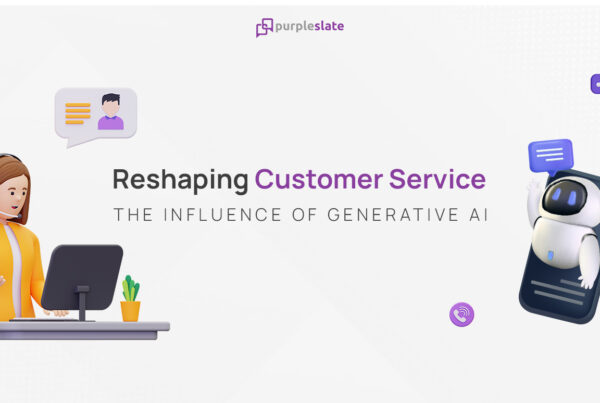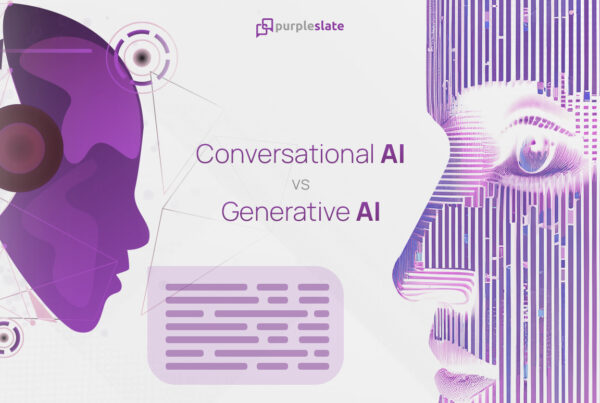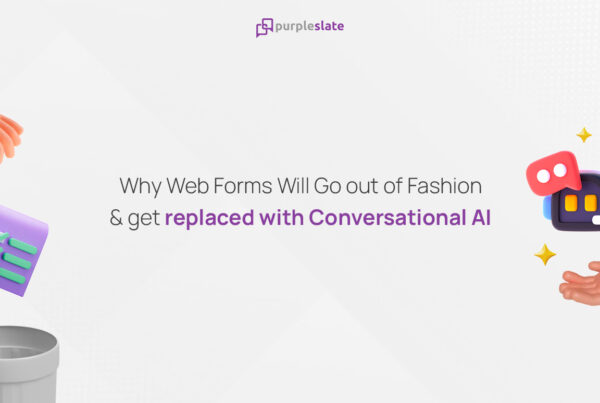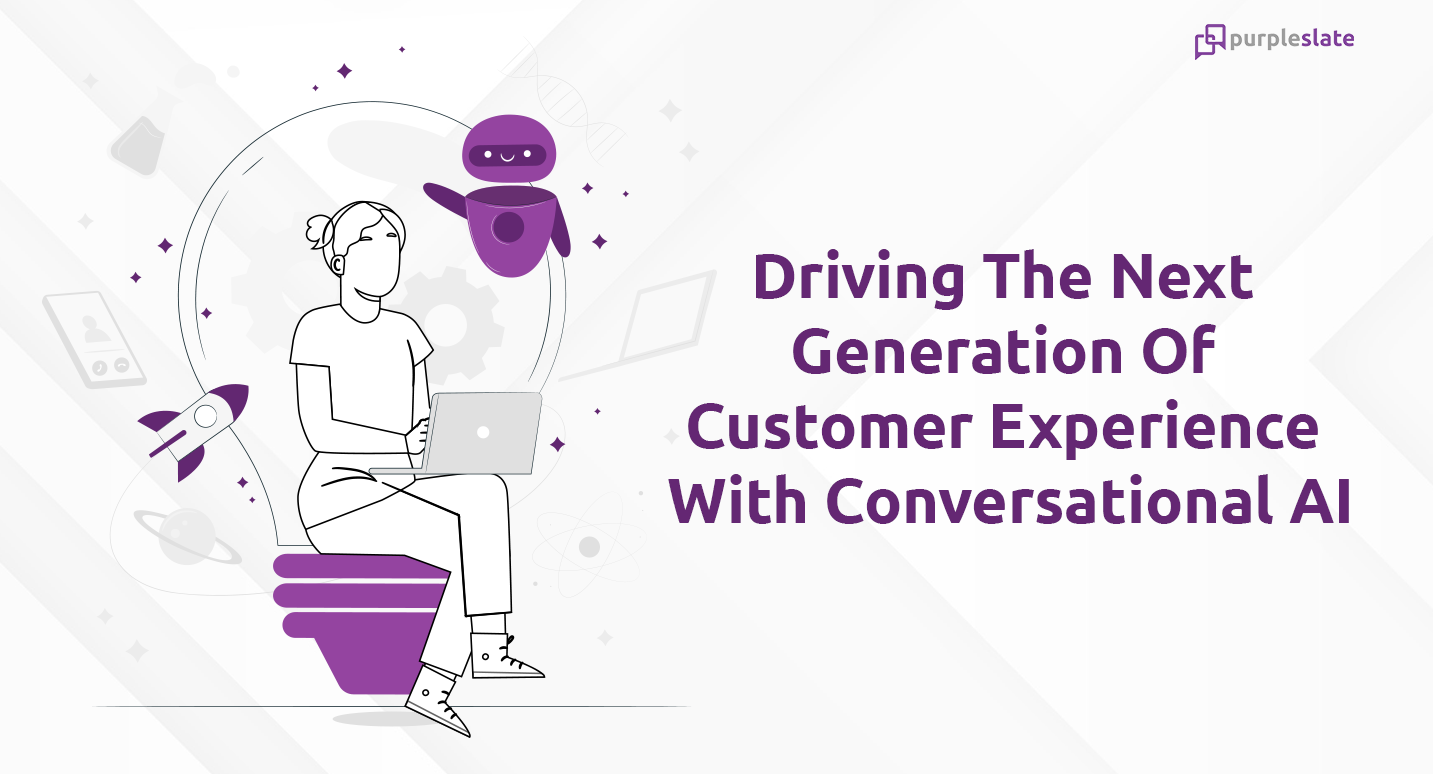
Introduction
Key Takeaways
● The definition of Conversational AI and how it is different from the traditional chatbot
● The benefits of Conversational AI to both end customers and businesses
● The three key points to remember when implementing Conversational AI
Table of Contents
● Prologue – Conversational AI Is Now In Demand More Than Ever
● Conversational AI – The Protagonist Of This Story
● Conversational AI – The Differentiator In A Cluttered World Of Traditional Chatbots
● Conversational AI – The Win-Win Solution For Better Customer Engagement
● Conversational AI – The Core Tenets That Business Leaders Must Not Ignore
● Epilogue – Conversational AI Will Define The Future Of A 10X Economy
Prologue – Conversational AI Is Now In Demand More Than Ever
“The global conversational AI market size is expected to reach USD 41.39 billion by 2030, according to a new report. It is expected to expand at a CAGR of 23.6% from 2022 to 2030.” – Research and Markets
Surprised? Don’t be. Pandemic was a watershed moment for industries and leaders worldwide on many fronts. Businesses shifted to a digital-first attitude overnight and hyper-personalization came to the forefront for driving exceptional customer experience.
Many organizations pivoted their customer service practices to ensure they stay ahead of the curve by offering their customers highly contextual conversations and enhanced value. In this article, we touch upon what is conversational AI, how it is different from the traditional chatbot and why it has gained prominence over the years. We also brief upon the three core tenets leaders must not forget when implementing Conversational AI.
Conversational AI – The Protagonist Of This Story
Deloitte defines conversational AI as “A programmatic and intelligent way of offering a conversational experience to mimic conversations with real people, through digital and telecommunication technologies.”
To us, it’s the greatest discovery of mankind since the prehistoric wheel. Why? It leverages Natural Language Processing (NLP), Machine Learning (ML) and data to engage in highly contextual and hyper-personalized conversations with the user thereby enhancing the overall customer experience via multiple channels like chatbots, virtual assistants and virtual Interactive Voice Responders (IVRS).
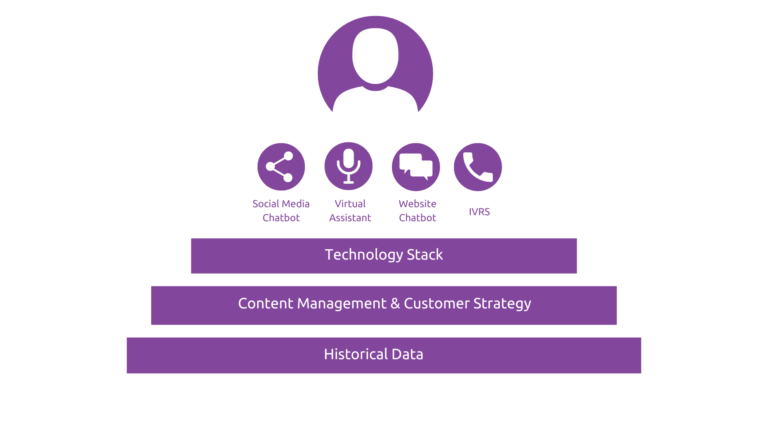 When we are speaking about conversational AI, it’s impossible to proceed with the story without showing noticeable differences between a traditional chatbot and a conversational chatbot, which is covered in the next section.
When we are speaking about conversational AI, it’s impossible to proceed with the story without showing noticeable differences between a traditional chatbot and a conversational chatbot, which is covered in the next section.
Conversational AI – The Differentiator In A Cluttered World Of Traditional Chatbots
Traditional script-based chatbots require pre-populated answers to the questions a customer ‘may’ ask. These are written by the company’s customer service agents and loaded onto the chatbot. Whenever a customer asks a question to the bot, it checks for matching keywords and pulls the most relevant answer from the script. However, the moment the query steps out of the rule, the bot fails. In the world of cut-throat customer experience engines, that is a big mistake. This is where Conversational AI comes into the picture.
We believe this can be explained better with an example. Imagine that you would like to know about your current refund status to a cancelled order. If you’re chatting with a traditional chatbot, the conversation may go like the illustration on the left. However, even if one of the words in the response do not match with a keyword, the output will go for a 360 turnaround as illustrated on the right.
Keywords match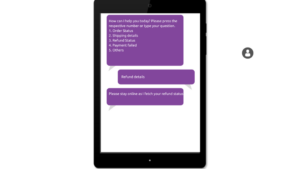
Keywords don’t match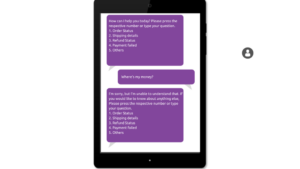
The same scenario would play out in a completely different manner if the chatbot is powered by Conversational AI.
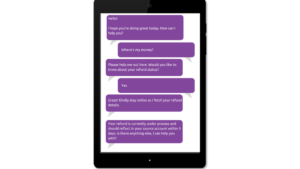
Apart from the above scenario, there are more differences between a scripted chatbot and a conversational chatbot.
| Traditional chatbots | Conversational chatbots |
| Keyword driven with stringent rule based responses | Learns from historical data and tailors the response |
| Bot will ‘break’ when the query steps out of the rule | Previous interactions help in building contextual responses |
| Spelling mistakes and short forms cause a nightmare | Powered by entity recognition to understand abstract inputs |
| Inability to scale the bot as further responses require re-training with an additional cost factor | Easily scalable as the bot learns and updates its responses to real-world scenarios |
Traditional chatbots have a history of botching up customer experience, precisely because of its stringent rule based responses. So it should come as a no-brainer that there was a negative impact on the purchase behavior of 79.7% customers when they knew that they were communicating with a non-human conversational partner. According to them, the bots are less-knowledgable and less-empathetic. Now, the question arises. How can conversational AI plug the obvious gaps in the current rule-driven chatbot environment? The next chapter outlines the benefits of conversational AI for the context driven millennial customer.
Conversational AI – The Win-Win Solution For Better Customer Engagements
Conversational AI for customer engagement? Yes. Conversational AI has a multitude of advantages in the current world where business leaders need to have that extra edge when serving their end-customers and stakeholders. Let’s see the benefits of conversational AI from two perspectives. One from the perspective of the end-user and the other from the perspective of the business leader.
Perspective of the end-user
Hyper-personalized experiences
The technology has the ability to provide tailored recommendations, personalized content, and information relevant to the unique needs of the customer.
All around the clock service
In a very traditional customer service set-up following the sun-staffing model, many a time the end-user after spending precious time on the phone finds himself/herself with a customer agent situated at the farthest corner of the world. This is because humans work for 8 hours a day. However, a chatbot is readily available 24/7, 365 days a year with an immediate resolution to their queries.
Context, now more than ever
People find it absolutely tiring to explain their predicament all over again, just because the human agent decided to transfer the call to his manager or the rule-based chatbot, unfortunately, cannot comprehend the query. Conversational AI-powered chatbots understand the context from past conversations and then proceed to answer the customer query.
Emotions matter
Conversational AI bots are built with the ability to understand the emotion behind each word by analyzing key triggers, connotations, and placement of the word within the sentence.
Multilingual support
Conversational AI can be trained to offer support in multiple languages. This positively impacts the customer experience as customers from non-native English speaking countries can have their queries solved while the business, they have a single end-to-end platform addressing all the problems.
Omnichannel experience
The days are long gone when systems and people used to operate in siloed channels to address customer queries. Conversational AI chatbots are truly omnipresent, enabled to connect through multiple channels for the customers to get their problems resolved while the business gathers data from all these channels in a single shot.
Perspective of the business
Enhanced customer acquisition
With customized recommendations, personalized offers, and ease of access to find content and information regarding the product, conversational AI drives better customer acquisition.
Enhanced customer loyalty
Immediate support to resolve high-ticket issues increases customer satisfaction. The data gathered from such interactions helps analysts understand customer pain points and execute the most effective plan of action to reduce churn.
Enhanced employee satisfaction
Automating low-value routine tasks frees up a lot of time on the analyst’s plate thereby giving them the opportunity to do high-value strategic tasks. The virtual agent goes the extra mile by recommending leads to the analysts and helping them achieve their sales targets.
Enhanced scalability
The bots can handle multiple queries at the same time without the business leader needing to expand their team and increase headcount. If there is a sudden surge in queries, small teams of agents can face challenges in reaching out to individual customers.
Reduced operating costs
Low integration costs and low maintenance costs coupled with a high potential for faster ROI help business leaders see their overheads reducing in the long run.
Generally, a topic about conversational AI covers how to approach the implementation. We would like to change the narrative a little bit and showcase to you the important requirements when approaching conversational AI projects as illustrated in the chapter below.
Conversational AI – The Core Tenets That Business Leaders Must Not Ignore
Whenever there is a digital transformation project, business leaders focus on getting it done in the most effective way possible. The decision to implement a conversational AI powered chatbot should also follow the same rule, hence it’s imperative that leaders across the world keep the below three tenets at the core of their plan.

Have a strategy in place!
Having an absolute clarity of what is expected out of implementing a conversational AI chatbot is the most important requirement. Is the chatbot for improving customer engagements? Enhancing brand awareness? Bringing in more leads or a combination of all? The digital stewards of the organization must have answers to this question which can then define the process and create actionable KPIs.
Buy, don’t build!
We understand the innate pull to convert this to an internal IT project. It influences both project governance and cost reduction. However, the leaders have to understand that their IT teams lack the required domain knowledge, and they definitely do not have access to proper training data to train the AI algorithm. Instead find expert partners in the field who have proven use cases.
Find a partner, not a vendor!
Do your due diligence before zeroing in on a partner. Vendors who say yes to every small bit of customizations, will drag this into a science project with long implementation timelines.
Instead, find partners who commit to bringing the best results as they will have skin in the game and will provide you with the best value in a shorter turnaround time.
Epilogue – Conversational AI Will Define The Future Of A 10X Economy
Conversational AI is here to stay and rock the world of customer experience. Many businesses are investing in conversational AI programs to improve their brand awareness, marketing strategy, customer support and overall customer experience.
With 75% of customers demanding service within five minutes of being online according to a McKinsey study, staying hyper-relevant in conversations will catapult businesses into next gen customer engagement programs. The key to unlocking success with conversational AI is to partner with the right solution provider who will help the CXOs achieve the best value out of their digital transformation initiatives in the customer department.
The question is, are you ready to join the bandwagon of digital stewards who are changing the world of customer experience?

